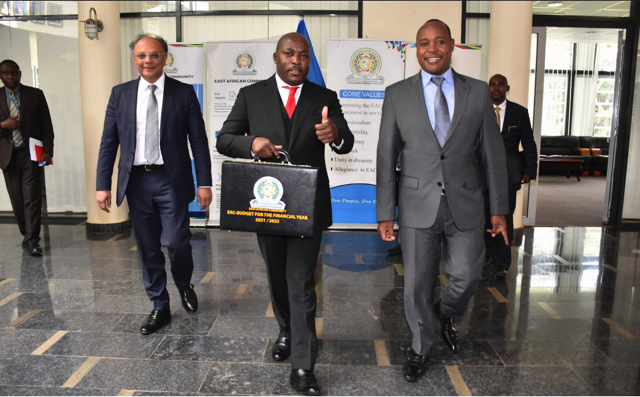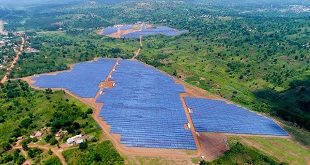
The spending plan comes at a time the COVID-19 pandemic has ravaged economies through lockdowns
| THE INDEPENDENT | The East African Community has tabled before the East African Legislative Assembly a US$91.7milion proposed budget for the Financial Year 2021/22 compared with US$97.6 million in the Financial Year 2020/21, with a huge chunk planned to be spent at the secretariat, legislative assembly and courts.
Themed ‘Economic Recovery through Industrialization and Inclusive Growth,’ the budget will focus on 10 priority areas, namely; Private Sector Development; Peace and Security; Health/COVID-19 Response; Trade Development; and Infrastructure Development. Others are; EAC Digitalization Agenda; Agriculture, Nutrition, Biodiversity, Environment and Circular Economy; Expansion of membership to EAC and strengthening relationships with the African Union and other regional organisations (RECS); Institutional transformation including Skills Development, and; Promotion of awareness creation and dissemination of information on the Community.
The EAC secretariat is expected to take the lion’s share of the budget with US$43.8milion; East African Legislative Assembly – US$15.4million; East African Court of Justice – US$3.7million and Lake Victoria Basin Commission – US$8.1million. The East African Science & Technology Commission is expected to receive US$1.5million; East Africa Kiswahili Commission – US$1.2million; East Africa Health Research Commission – US$1.8million; East African Competition Authority – US$1million; Inter University Council for East Africa – US$ 11.1million and; Lake Victoria Fisheries Organization – US$3.6million.
Adan Mohamed, the chairperson of the Council of Ministers and Kenya’s Minister for EAC, said the 2021/2022 budget comes at a time the COVID-19 pandemic has ravaged economies through lockdowns and economic shutdowns, negatively affecting the economic performance of the entire region.
“The reality is that COVID-19 will be with us for a much longer time than earlier anticipated. The impact of the pandemic on EAC Partner States’ economies has been devastating, to say the least. Manufacturing and agriculture sectors have been affected due to disruption in global supply chains and a fall in global demand for key export goods such as horticulture produce,” he explained, adding that during the year 2020, exports of goods shrank in all EAC Partner States.
“For example, exports from Kenya and Uganda, contracted by 7.6 percent and 1.7 percent respectively, between March to June 2020 while during the same period, imports of intermediate goods contracted by 25 percent, 11.3 percent and 22.9 percent in Kenya, Uganda and Tanzania respectively,” he said.
“Similarly, the industrial sector in Rwanda, Kenya and Uganda shrunk by 3.5 percent, 0.5 percent and 6.3 percent respectively. In addition, Covid-19 has led to deteriorating external positions in all EAC Partner States on account of its adverse consequences on tourism and aviation sectors, workers’ remittances, foreign direct investment and loan disbursements,” he added.
Mohamed revealed that the economic growth in the EAC region averaged 2.3 percent in 2020 compared to an average of 5.4 in 2019 due to COVID-19 pandemic.
“The most affected sectors were services and affiliated sectors, and those that are dependent on global supply chains. Growth in the EAC region is expected to recover in 2021, reflecting a resumption of global economic activity with the easing of containment measures and sustained implementation of growth-supporting measures,” he said.
 The Independent Uganda: You get the Truth we Pay the Price
The Independent Uganda: You get the Truth we Pay the Price


